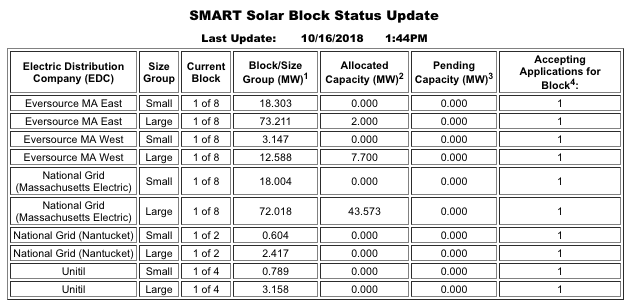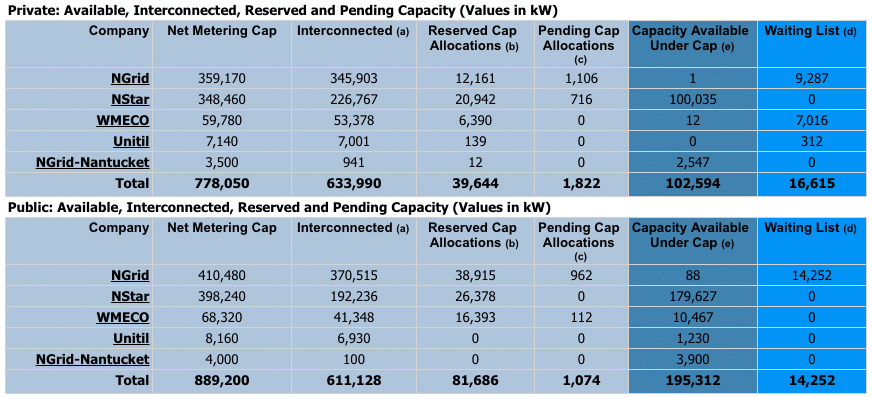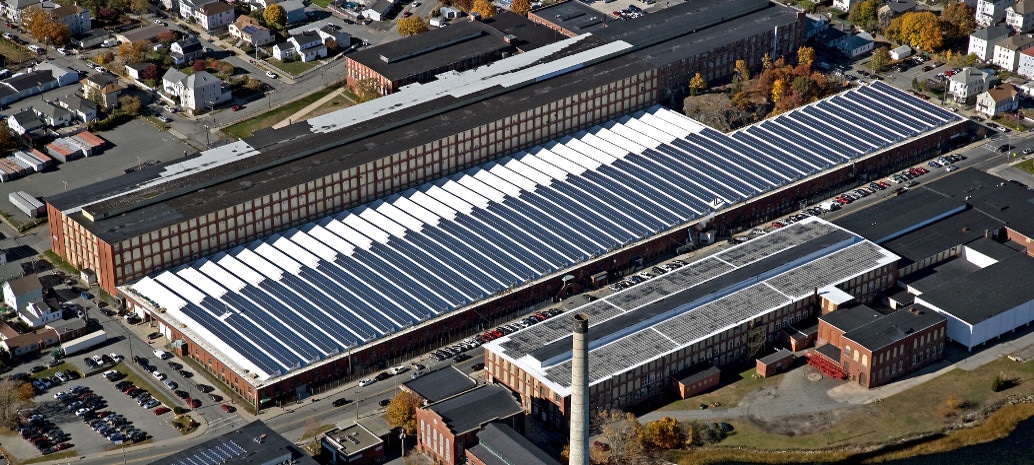It’s been a long time coming. In the time that Massachusetts has been getting ready to deploy its SMART program, Charlie Baker (R) was elected to a second term as governor.
And it is nothing if not complex. Massachusetts’ Department of Energy Resources (DOER) left no stone unturned in crafting what may be the most sophisticated incentive program for small-to mid-scale solar to date, and one of the most nuanced. If you aren’t yet confused from the capacity blocks, adder tranches and alternative on-bill crediting mechanism, well, we are.
And we’re wondering if when the meticulously crafted program goes live today around noon, that the application intake system fails from the flood of applications for systems of various capacities that are anticipated.
But the mad rush to qualify isn’t happening in the application process itself, as all applications received through midnight on November 30 will be treated as equal, but will receive a place in the queue based on either on when their interconnection agreement was executed (for projects larger than 25 kW-AC) or when a contract was signed (for projects smaller than 25 kW).
After this a spot in the queue will be awarded on a first-come, first-served basis according to when applications are received.
And how many of these are pending? It’s not clear that anyone knows. In collaboration with utility Eversource DOER offers a status update on the various blocks, but the version available on the website hasn’t been updated in six weeks, and shows projects that bid in a year ago to set prices. Regardless, in that dated estimate, already more than half the capacity for the first block of large (up to 5 MW) projects in both National Grid’s service area in the western part of the state and Eversource’s service area (which includes the Boston metro area) had been claimed.

It’s also clear that project development is ongoing, including a 5 MW project in Westhampton which received approval from the local planning board last week.
Positions in the queue are a critical detail, as the incentive levels under SMART step down as blocks are filled. And this could leave developers facing a significant unknown in their financial calculations.
Additionally, the caps on the state’s net metering program have already been hit in a majority of utility service areas, which will force many small to mid-sized commercial and industrial installations into the DOER work around: the Alternative On-Bill Credit.

All in all, it is going to be interesting to see how this week plays out.
Links to the individual electric distribution company application portals can be found below:
Eversource: www.masmartsolareversource.powerclerk.com
National Grid: www.masmartsolarnationalgrid.powerclerk.com
Unitil: www.masmartsolarunitil.powerclerk.com
This content is protected by copyright and may not be reused. If you want to cooperate with us and would like to reuse some of our content, please contact: editors@pv-magazine.com.









By submitting this form you agree to pv magazine using your data for the purposes of publishing your comment.
Your personal data will only be disclosed or otherwise transmitted to third parties for the purposes of spam filtering or if this is necessary for technical maintenance of the website. Any other transfer to third parties will not take place unless this is justified on the basis of applicable data protection regulations or if pv magazine is legally obliged to do so.
You may revoke this consent at any time with effect for the future, in which case your personal data will be deleted immediately. Otherwise, your data will be deleted if pv magazine has processed your request or the purpose of data storage is fulfilled.
Further information on data privacy can be found in our Data Protection Policy.